1760-1843 Early history and Viscount Sackville
Sackville House Stables, a Grade II Listed establishment, is one of Newmarket's older racing stables having first appeared on a map in 1760. One of its oldest sections is the barn, located on Sackville Street, which certainly still had cobbled floors in the recent past. In its earliest days it is believed that Sir Charles Bunbury had horses trained here by Robert Teasdale, a Newmarket trainer who died in 1785 at Great Barton. At the time it was built, in the middle of the 18th century, the street on which the house stood was not known as Sackville Street, but as the quaintly named Shagbag Alley. Whilst today that name would have a very different meaning, in those days a shagbag was a bag used by sportsmen for carrying fighting game cocks to the cockpits prior to the sport being made illegal in 1849. At some stage, between 1760 and 1843, the house was owned by the Sackvilles, after whom the house is named. George Sackville was born on 26th January 1716 and became Lord George Sackville up to 1770, before reverting to the family name of Germain between 1770 and 1785. He died on 26th August 1785 and was succeeded by his son Charles Sackville. It is not known whether George owned Sackville House in the 18th century, or whether his son took ownership of it after his father's death. Charles Sackville, born on 27th August 1767, took the title Viscount Sackville in 1785, and was a wealthy man owning at least 5 manors, predominantly located in Northamptonshire. In the 1792 season Lord Sackville was heavily involved in racing. Early in that season, on Wednesday 28th March 1792, he rode his own horse Rover into 5th place in a Sweepstake at the Bibury meeting prior to winning a 25 Guineas Sweepstake over 4 miles the next day, beating Mr Hammond's Gardener. On 30th March, at that same meeting, he partnered his own horse Buffer to defeat Gardener again over a mile. Later in the season, on 21st June he won the Members Plate with Aecaus over 4 miles at Peterborough, while on 26th June he partnered Aecaus (4/7 fav) to victory over 5 rivals in a Weight for Age Handicap at Stamford.
Within 2 years he had registered his own colours, white with a black cap, and began riding further afield. By now he was almost certainly using Sackville House on his many visits to Newmarket. At the 1794 Craven meeting he was placed second on Kitt Carr (10/1) in the Oatland Stakes, beaten by Lord Grosvenor's Druid (5/1). At the May Spring meeting his horse Spider was placed third in a 1200 Guineas Subscription race behind Lord Grosvenor's Cayeene and the Duke of Bedford's Lucifer. The first record of a win at Headquarters was on Tuesday 8th July 1794 when Silver (3/1) beat the Duke of Grafton's Grouse (10/1) and Lord Oxford's Bruiser (12/1) in a Sixty Guineas Weight for Age race. He may well have resided on a part-time basis at Sackville House between 1821 and 1827 when he was Master of the Horse, a post he took up again in 1835. This was a post of great importance because he was in charge of the horses, hounds, stables and coach houses of the Sovereign of the day, although he devolved the management of the Royal Stables and Royal Stud to the Crown Equerry who was known as the Gentleman of the Horse. Charles died on 29th July 1843 without leaving a son and heir, and all of his estates passed to his niece Caroline Harriet Stopford Sackville.
For over 4 centuries racing has been staged in Newmarket, but how have the racecourses evolved from an initial starting point at Fleam Dyke Pumping Station, some 8 miles from the town, with a winning post barely 200 metres from the town centre, into two world recognized, excellent racecourses and a universal acceptance that Newmarket is the Headquarters of racing?
To access an interactive racecourse map showing over 50 individually named racecourses CLICK HERE. The map will enable you to:-
1. Determine when extended races over 8 miles, 6 miles and 4 miles began to be replaced by the courses now visited by thousands annually;
2. Consider how the challenge of crossing the Devil's Dyke was overcome;
3. Contemplate why the town no longer has a steeplechase course despite having at least 5 courses during the past 2 centuries;
4. Examine the practicalities of having up to 48 starting posts and winning posts;
5. Appreciate that it was not financially viable to have an open racecourse spread widely across the heath, with a finishing post barely 200 metres from the town centre;
6. Research how and why the Cambridgeshire Handicap has been contested over 3 different courses.
NOTE: The map does not make mention of 2 particular courses:-
(i) Sefton Course (also known as the Cambridge Road Course)
Source: 1970 Raceform. Used from 1959 to 1975.
(ii) New Circular Course
The Circular Handicap was run on Friday 29th October 1875 on the New Circular Course of about two miles.
Source: London Standard (30th October 1875): ''the horses started near the Turn of the Lands, ran back way of the Cambridgeshire Course towards the Ditch, and afterwards proceeded down the side of the Tan Gallop, and turned into the Rowley Mile near the Bretby Stakes starting post, finishing at the stand at the end of the flat. Except in the hollow near the Cambridgeshire start the runners should have been visible all the way if the sky had been bright and clear''.
Another report hoped that the Circular Handicap would become a feature in future programmes, as it would be contested in front of the new grandstand which would be completed in about a year and would be able to accommodate thousands.
(I am grateful to Tim Cox for bringing attention to these 2 courses.)
Enjoy researching the intriguing history of Newmarket and its many racecourses.
John Evans, born at Manchester in 1855, became apprentice to Fred Bates, based at various times in Lambourn and Middleham, but he then transferred to Newmarket where he lived for the rest of his life. He worked for both William Jarvis and Peter Price before being put in charge in summer 1886 of the Duchess of Montrose's horses at Sefton Lodge including the horses she had previously had with Charles Archer. Just over a year later Evans had moved on to Chevalier Ginistrelli's stable at Sackville House where he remained until December 1893. During his time at Sackville House he trained Signorina, winner of the 1889 Middle Park and Lancashire Plate.
1889 Middle Park stakes at Newmarket SIGNORINA 4/6 fav owned by Chevalier Edorado Ginistrelli, trained by John Evans and ridden by George Barrett
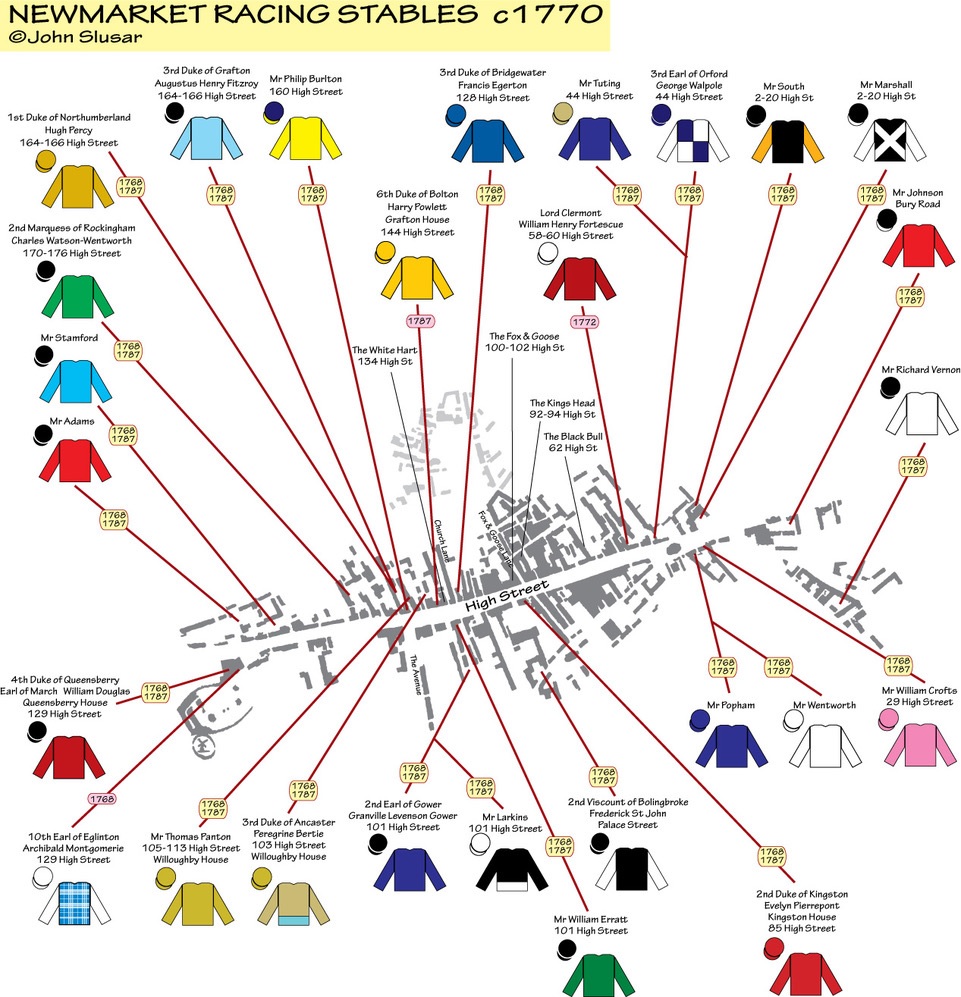
1893-August 1894 Frank Arnull
Frank Arnull, second son of the famous Newmarket racehorse trainer William Arnull, took over the reins at Albert House in 1887 after the death of his father. William Arnull died on 14th August 1887 aged 67, just 4 months after his wife had died. His funeral was marked by all of Newmarkets shops closing, such was the high esteem in which he was held, with the principal mourners being his eldest son, William Arnull junior, his second son Frank, his sister F Arnull and his nephew Charles Arnull. It was a positive Who's Who of Newmarket racings elder statesmen, with James Waugh, John Dawson, Robert Sherwood and William Jarvis also in attendance. Tragically, his son William was to die less than 2 years later in 1889. After holding the fort at Albert House for a short period, Frank Arnull was appointed private trainer to Lord Gerard part way through the 1888 season. Lord Gerard installed Frank at Astley House, although Gerard also owned Moulton Paddocks. That arrangement came to an end in October 1890 when Willie Robinson, formerly a successful jockey, replaced Frank Arnull as private trainer to Lord Gerard. In 1893 Frank Arnull began training at Sackville House, a position he held until late August 1894 when he decided to leave England to seek his fortune abroad. During his time at Sackville House he trained for Prince Soltykoff. He went to Hoppegarten in Germany where he trained for a number of years, before moving on to France and Russia. However, he maintained his links with English racing when, in 1907, his son, also called Frank, was apprentice to Mr Jarvis at Waterwich House when he was just 15. Frank senior died in July 1926 in Hoppengarten.
December 1894 Sam Loates
In December 1894 the marriage took place at St James's Church, Piccadilly, of the well-known jockey Sam Loates and Miss Annie Catharine Enoch, daughter of Mr Joseph Enoch, the Newmarket trainer, with the jockey's brother Tom Loates serving as best man. The newly-weds, Mr & Mrs Loates, enjoyed a honeymoon in London before taking up residence at Sackville House. Sam Loates was born in 1865 and became apprentice to Tom Cannon at Danebury, Wiltshire for whom he rode his first winner aged 17. Within 2 years he had claimed his first Classic success, winning the 1884 Epsom Derby aboard Harvester (SR 1983) who dead-heated with St Gatien. He enjoyed further successes in the Oaks, Deby and St Leger in 1895 and was crowned Champion Flat jockey in 1899, benefitting from a lucrative retainer with Sir John Blundell Maple. That retainer worked well for 2 years, but at Northampton Racecourse on 14th November 1902 he broke his thigh bone which prevented him from riding in the 1903 season. After retiring as a jockey he became personal trainer to Solly Joel, and was involved in the training of 1915 Derby and 2000 Guineas winner Pommern, although ultimately Charles Peck was the official trainer.
1884 Epsom Derby HARVESTER (SR 1983) 100/7 owned by Sir John Willoughby, trained by James Jewitt and ridden by Sam Loates
1895 Epsom Derby SIR VISTO (SR 1966) 9/1 owned by the 5th Earl of Rosebery, trained by Matthew Dawson and ridden by Sam Loates
1895 Epsom Oaks LA SAGESSE (SR 1965) 5/1 owned by Sir James Miller, trained by Martin Gurry and ridden by Sam Loates
1895 St Leger SIR VISTO (SR 1966) 9/4 fav owned by the 5th Earl of Rosebery, trained by Matthew Dawson and ridden by Sam Loates
1898 1000 Guineas NUN NICER (SR 1925) 11/2 owned by Sir John Blundell Maple, trained by Willie Waugh and ridden by Sam Loates
1898 2000 Guineas DISRAELI (SR 1967) 100/8 owned by Wallace Johnstone, trained by John Dawson senior and ridden by Sam Loates
1900 1000 Guineas WINIFREDA (SR 1797) 11/2 owned by Leonard Brassey, trained by Tom Jennings senior and ridden by Sam Loates
1915 Epsom Derby POMMERN (SR 2064) 11/10 fav owned by Solly Barnato Joel, trained by Charles Peck and ridden by Steve Donoghue
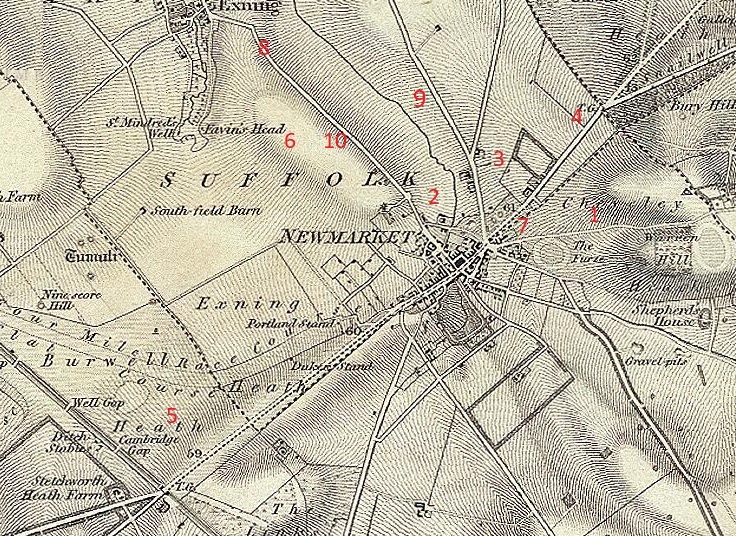
1911-15 Claude Halsey
In 1911, prior to the outbreak of the First World War, Claude Halsey was training at Sackville House. He was the son of the successful jockey and trainer William (Bill) Halsey, and was born in 1889, riding his first winner in 1904. His father's most successful period as a jockey was at the turn of the century, riding Handicapper (SR 1950) to win the 1901 2000 Guineas at 33/1 for Sir Ernest Cassel, owner of Moulton Paddocks in Newmarket. Six years later he rode Wool Winder (SR 1893), the 11/10 favourite to win the 1907 St Leger for Colonel Edward Baird. William was also successful over the jumps, riding Barsac (25/1) to second place behind Ambush II in the 1900 Grand National.
Claude Halsey (continued)
The highpoint of his training career was winning the 1923 Irish Derby with Waygood (SR 1906) at 6/1 for Walter Raphael. He retired a year later and moved to Newmarket where he enjoyed a long and happy retirement, living to the ripe old age of 94, dying on 5th November 1961. Claude's training career was interrupted by the outbreak of the First World War, but he resumed training after the War had ended albeit in France.
1852-1921 William Arthur Jarvis
William Arthur Jarvis was born in 1852 and after a moderately successful career as a jockey he turned to training. He trained at Waterwitch House in Newmarket, although he was also closely associated with Sackville House Stables. He enjoyed just one Classic victory, training Bona Vista to win the 1892 2000 Guineas, but he acknowledged that his favourite horse was Cyllene who won the 1898 Jockey Club Stakes and, a year later, captured the Ascot Gold Cup for supportive owner Charles Day Rose. On Tuesday 6th December 1921 William Jarvis, the well-known and well-respected trainer based at Sackville House, died after a long illness. He was one of the oldest trainers in Newmarket, regarding Cyllene as the best horse he ever trained, and was part of the Jarvis dynasty. He married the daughter of trainer James Godding and they had 3 sons, all of which became well-regarded trainers in their own right; Willie Jarvis, Jack Jarvis and Basil Jarvis. In his will, William Arthur Jarvis left property to the value of £5657.
1892 2000 Guineas BONA VISTA (SR 1905) 10/1 owned by Charles Day Rose, trained by William Jarvis and ridden by Willie Robinson
1897 National Breeders Produce Stakes at Sandown CYLLENE owned by Charles Day Rose, trained by William Jarvis and ridden by Sam Loates
1898 Newmarket Stakes CYLLENE owned by Charles Day Rose, trained by William Jarvis and ridden by Sam Loates
1898 Jockey Club Stakes CYLLENE owned by Charles Day Rose, trained by William Jarvis and ridden by Sam Loates
1899 Ascot Gold Cup CYLLENE owned by Charles Day Rose, trained by William Jarvis and ridden by Sam Loates
July 1926-April 1930 Victor Pride Jones
From 1926 to 1930 Dr Victor Pride Jones, a veterinary surgeon for the Jockey Club, resided at Sackville House. He had begun his veterinary career in Bristol before being appointed to the Jockey Club role in July 1926. Dr Pride Jones was a pioneer of x-ray treatment for horses, because the large room next to the wooden staircase, near the house and the old pump, was called the Ray Theatre and had a framework for holding a horse still. Hugh Leader still has a photograph, signed by John D Hertz, of the American Kentucky Derby winner Reigh Court, thanking 'the doc' for his help with Reigh Court. Reigh Court, owned by 'Fannie' Hertz, trained by Bert S Mitchell and ridden by Chick Lang, was an American Hall of Fame Thoroughbred who won the 1928 Kentucky Derby. In 1929 Reigh Court came to England with the Ascot Gold Cup as his principal target. He suffered an early setback with defeats at Lingfield and Newbury, with the crowd mocking the flamboyant colours, yellow, black circle on sleeves and yellow cap, of his owner John 'Fannie' D Hertz. However, at Epsom on 5th June 1929 Reigh Court won the Coronation Cup and went on to finish second, behind Invershin, in the Gold Cup at the Royal Ascot meeting. Tragically, on Sunday 6th April 1930 Dr Victor Pride Jones died of paratyphoid and pneumonia at 6.30 pm at his residence, Sackville House, aged just 44.
1930-50 Geoffrey Hugh Leader, Jack Jarvis
Geoffrey Hugh Leader MRCVS and his wife and son, Hugh aged one, moved to Sackville House in 1930 where he ran his veterinary practice. Hugh went to boarding school at the age of 9, followed by National Service overseas, before working in London. Six years after moving to Sackville House Geoffrey and his wife had another baby, but his wife tragically died following childbirth. On Monday 11th May 1936 Sackville House and training establishment, with accommodation for 13 horses, was sold by auction to Geoffrey Hugh Leader, the veterinary surgeon, for £2,100. He was still in residence at the outbreak of the Second World War, remaining there with his second wife, step-mother to Hugh, until 1950. However, he joined the veterinary practice of Professor Brayley Reynolds at March House in the High Street in the late 1930s. Geoffrey was a member of a racing family with a rich history in racing. His elder brother, Ted Leader, was a successful National Hunt jockey before turning his hand to training at Machell Place, although his younger brother chose not to enter a career in racing, preferring instead to work in the motor industry as a partner of Turner and Hore of Cambridge, running the Heath Garage which was opposite the cemetery. Geoffrey's father was Thomas Richard Leader, the eldest of 8 children of Thomas Leader, who originated from Wroughton, near Swindon. He moved to Newmarket in 1887 and purchased a house in Old Station Road which he renamed Wroughton House after his native village. He trained the 1927 Grand National winner Sprig (8/1), and Gregalach (100/1) two years later in 1929 when the largest field in history, 66 runners, contested the Grand National. Geoffrey's uncles, Colledge, George Frederick (Fred) and Harvey all went on to train, while he also had 3 aunties, one of which was Ethel who married Jack Jarvis. Colledge was so named because when he was born a family friend's son had just gone off to college, a rare event in those days, and the Leader family thought they would mark the occasion, although the father is likely to have miss-spelt the name on the birth certificate. Fred spent most of his training career at Primrose Cottage. Sir Jack Jarvis owned Sackville House during part of Geoffrey's stay there, using its 13 boxes as an overflow yard to Park Lodge. In 1938 Hugh has fond memories of a 2-year-old, Blue Peter, which Jack stabled at Sackville House. Hugh remembers him as a very friendly horse, recalls stroking his muzzle through the bars, but also remembers being with his cousins Vivien Jarvis and Peter Leader, saying goodbye to Blue Peter as he was boxed up to go to Park Lodge stables where he enjoyed a very successful career. He won the 2000 Guineas and Epsom Derby, but unfortunately the outbreak of War in 1939 denied him the chance of a Triple Crown when the St Leger was cancelled, although the French also had a wonder horse in Pharis, so a meeting between the two had been eagerly anticipated. After his racing career ended Blue Peter went off to Lord Rosebery's Stud at Mentmore. Boyce House Stables was next to Sackville House Stables and, at some stage, the two were combined to increase the stabling capacity. Some people at the time felt that the two lost their individual characters, but appreciated the economy of scale that resulted in increasing the number of stables available. During the War, and after Dunkirk, soldiers were billeted at Boyce House Stables, with officers likely to have occupied Boyce House. These were replaced with Italian Prisoners of War once the War had ended. Hugh remembers a story about one of the POWs having a fine tenor voice who sang arias and Neapolitan folksongs in the mornings. He fondly recalls that his father, Geoffrey, was an opera buff and wonders if he ever silently applauded the free recital's he heard each morning.
The bay colt Blue Peter (SR 2089), by Fairway out of Fancy Free, was born in 1936 and bred by the Mentmore Stud. He was owned by Harry Primrose, the 6th Earl of Rosebery and trained at Park Lodge by Jack Jarvis. He was trained at the overflow yard at Sackville House as a 2-year-old and raced twice, being unplaced in his inaugural race and following it with a promising second behind Foxbrough in the 1938 Middle Park Stakes. However, it was as a three year old that he showed his true ability, remaining undefeated throughout the season. He won the Blue Riband Trial Stakes before winning his first Classic, the 2000 Guineas, beating Heliopolis by an impressive 4 lengths. He then won the Epsom Derby and the Eclipse Stakes at Sandown, but was denied the chance to win the Triple Crown when the St Leger was cancelled due to the outbreak of the Second World War. He had a successful stud career, being named leading broodmare sire in Great Britain and Ireland in 1954. He died three years later aged 21 and was buried in the grounds of Mentmore Stud.
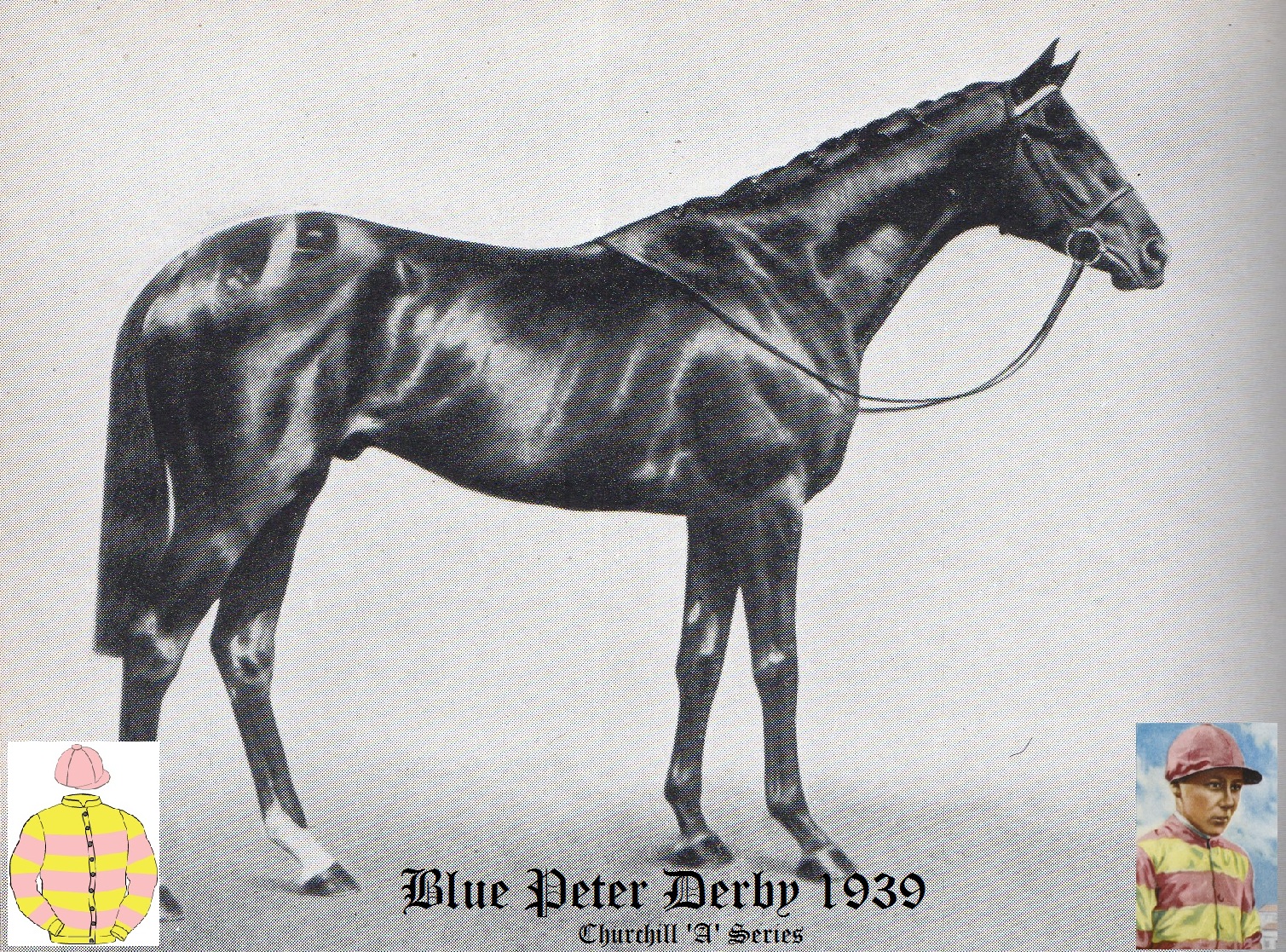
April 1943-1945 Richard 'Dick' Perryman and Stanhope Joel
Between the Wars Richard 'Dick' Perryman had been a successful jockey for almost 20 years, riding as first jockey for Lord Derby between 1936 and 1939. However, in 1942 he injured his arm in a motoring accident and was discharged from the Army, but was no longer capable of pursuing his former career as a jockey. In April 1943 he was granted a licence to train, taking over at Sackville House to train horses for Stanhope Joel after Jack Jarvis chose Palace House as his overflow yard rather than Sackville House Stables. Dick Perryman enjoyed much early success at Sackville House, sending out Chamossaire (SR 2029) to win the 1945 St Leger. However, his most successful time as a trainer came just a year later, when it is believed he had transferred to Beaufort House Stables, where he trained Airborne to win the Epsom Derby and St Leger.
1945 St Leger CHAMOSSAIRE (SR 2029) 11/2 owned by Stanhope Joel, trained by Dick Perryman and ridden by Tommy Lowrey
1946 Epsom Derby AIRBORNE 50/1 owned by John E Ferguson, trained by Dick Perryman and ridden by Tommy Lowrey
1946 St Leger AIRBORNE (SR 1973) 3/1 owned by John E Ferguson, trained by Dick Perryman and ridden by Tommy Lowrey
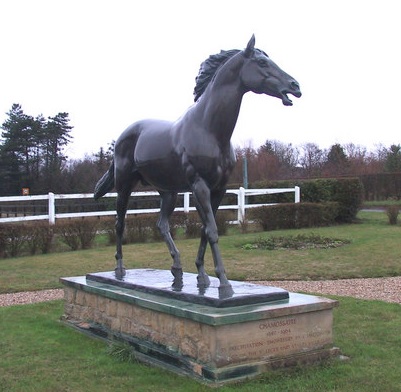
CHAMOSSAIRE (SR 2029)
The chestnut colt Chamossaire was born in 1942 and sold as a yearling for 2,700 guineas to Walter Earl who was acting on behalf of Stanhope Joel. The name Chamossaire came from a mountain in Switzerland. Chamossaire was sent to be trained by former jockey Richard 'Dick' Perryman, who was employed as private trainer to Stanhope Joel, then based at Sackville House but later moving to Beaufort House Stables. In his two-year-old career he won 2 of his 3 starts, all at Newmarket. He began his three-year-old career in a less than promising way, being placed third in the Chatteris Stakes in May behind High Peak and Royal Charger. He achieved fourth place in the 2000 Guineas despite the distance being too short. In the Derby, run at Newmarket during the War, he was fourth once again of the 27 runners. He was then sent to the St Leger, ran at York because Doncaster was out of action, and was made 11/2 in a dozen strong field. He took the lead in the final furlong, holding off the determined challenge of Rising Light by 2 lengths.
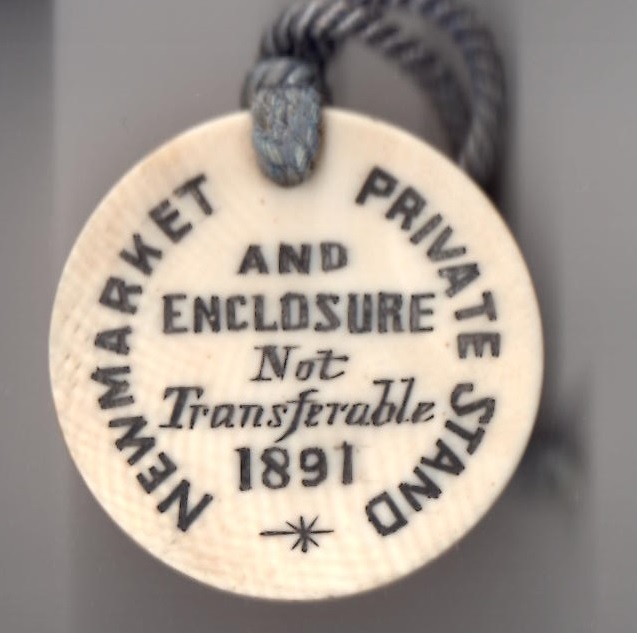
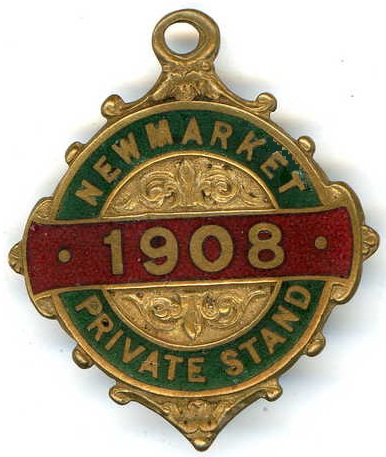
1954-1981 Arthur Goodwill
Arthur William Goodwill was born on 17th December 1911 at Oswaldwistle, Lancashire. Although not born into a racing family, he became an apprentice to Harvey Leader in 1926 where he earned the nickname 'fiddler'. This had nothing to do with his racing antics, but everything to do with his ability with a violin. He had limited success as a jockey, initially over the Flat with Harvey Leader, and later over jumps with Tom Leader when he became heavier. He spent the War working with radios, whilst at the same time moonlighting as Manager at a Cambridge Night Club, but as soon as the War had ended he launched his training career at Royston. From there he moved to Balsham in 1946, while in 1954 he rented Sackville House Stables from Jack Jarvis, later purchasing the racing establishment. He was a likeable character who seemed to make something out of nothing, recording his best season in 1961, notching up 22 winners, 18 seconds and 11 third placed horses, and a year later he landed the Princess Mary Nursery at Doncaster with Vent Neurf. Arguably his greatest success was winning the 1969 Bunbury Cup with Woolley. He retired at the end of the 1981 season, and died aged 82 in November 1994. The link below gives an insight into his training methods at Sackville House Stables in the late 1950s.
https://www.britishpathe.com/video/apprentice-jockeys/query/goodwill+stables+horse+racing
1962 Princess Mary Nursery at Doncaster VENT NEURF (5/1) owned by Mr J Courtney, trained by Arthur Goodwill and ridden by Tommy Masters
1962 Sceptre Stakes at Chester VENT NEURF (7/1) owned by Mr J Courtney, trained by Arthur Goodwill and ridden by Tommy Masters
1969 Bunbury Cup WOOLLEY (9/1) trained by Arthur Goodwill and ridden by Dennis McKay
December 1980-1986 Robert Williams
In December 1980 Robert Williams, formerly assistant trainer to Barry Hills for 6 years, launched his training career at Sackville House Stable, starting with a string of 20 horses of which 14 were two-year-olds. Within 3 years it looked likely that he would achieve his life-long ambition to land the Chester Cup when Alpha Omega was made favourite, but alas the race was abandoned. However, in 1994 he got another bite at the cherry and won the Chester Cup with 14/1 shot Doyce in the hands of pocket rocket Gary Bardwell.
1987-1993 Jeff Pearce
Jeffrey Norman Pearce was born at Thornbury in Worcestershire on 6th October 1947 to working class parents who bought him a pony which changed his life and set him on the path to becoming a jockey. He entered the world of racing as an apprentice to Toby Balding and had his first ride in public in a novice chase at Towcester on 7th October 1967. It was not a successful beginning as the horse refused. It was to be almost 5 years before he rode his first winner, Fascination at Plumpton on 21st February 1972, the first of about 90 career wins, but in 1981 he suffered one fall too many on Merchant Tubbs at Southwell and sustained career ending injuries. He turned his hand to training, serving as assistant to Frankie Durr for 5 years at Fitzroy House Stables in Newmarket before taking out a licence in his own name in 1986. He launched his training career at Sackville House Stables and eked out a living for the next 6 years. In 1993 Jim Furlong, president of the Racehorse Owners' Association, purchased Wroughton House and asked Pearce to train 9 horses for him.
1998-2014 Patrick Gilligan
Patrick Gilligan was born in 1965 and, along with his wife Vicky, gained an honours degree in equine studies before becoming a successful racehorse trainer in Newmarket. He took charge at Sackville House Stables in 1998, purchasing the House and Stables from Jeff Pearce. He spent 15 years training in the United Kingdom, enjoying early successes with Rushcutter Bay and later with the sprinter Brunelleschi. He moved to the USA in 2014 to support his son Jack in his burgeoning career as a jockey. Jack was an apprentice to Sir Mark Prescott at Heath House Stables in Newmarket prior to moving to America.
1998 Vardy Continental Handicap at Newmarket RUSHCUTTER BAY 25/1 owned by the Treasure Seekers Partnership, trained by Patrick Gilligan and ridden by Dean McKeown
2000 Rous Listed Stakes at Newmarket RUSHCUTTER BAY 20/1 owned by the Treasure Seekers Partnership, trained by Patrick Gilligan and ridden by Franny Norton
2000 H&K Commissions Handicap at Newmarket RUSHCUTTER BAY 7/4 fav owned by the Treasure Seekers Partnership, trained by Patrick Gilligan and ridden by David Harrison
2001 Palace House Stakes at Newmarket RUSHCUTTER BAY 20/1 owned by the Treasure Seekers Partnership, trained by Patrick Gilligan and ridden by Mick Kinane
2008-2009 John Ryan
John Ryan, son of Cadland trainer Mick Ryan and grandson of Mick Ryan the stud groom who took care of Hyperion, was born in Newmarket on 3rd March 1968 and rode over the Flat and jumps. He piloted his first winner, Polynor, for father Mick at Southwell on 27th April 1987. He rode as a conditional jockey for National Hunt legend Stan Mellow, winning 174 races in his career. He retired from race riding in 1997 to begin the process of learning his trade as a trainer. He became assistant to Yogi Breisner, a well-known and respected lecturer in jump racing for the British Racing School in Newmarket, before moving on to assist Philip Mitchell at Epsom. He followed this with a period assisting his father, later gaining further experience assisting Jamie Poulton. When his father retired in October 2005 John felt the time was right to train in his own right, renting part of Cadland and racing under the banner of John Ryan Racing. When Gerard Butler, who also operated from Cadland in 2006, sharing the facilities with John, needed to expand and take over all of Cadland, John moved to Sackville House stables between 2008 and 2009, but then returned to Cadland House Stables in 2010.
2015-September 2018
Robyn Brisland, Nick Littmoden and Michael Squance have all occupied Sackville House Stables at some point.
October 2018- present Henry Spiller
Henry Spiller is a young, enthusiastic trainer who is destined for great things. His love of horses began when he was just a child. His father used to read him pedigrees instead of bedtime stories! His father, Charles, and mother Fiona set the foundations for Henry to learn and develop his passion for racehorse training. After periods spent with Jeremy Harley and John Oxx at the Curragh, Henry flew the nest and took up a position at Godolphin where he learned the trade from Saeed bin Suroor throughout Great Britain, America and Dubai. Henry struck out on his own with a couple of winners in 2015, training from one of the 2 barns at Saffron House Stables. He moved from Saffron House to Laureate Paddocks in August 2016, but in October 2016 he was based at Savile House Stables in the heart of Newmarket. In 2018 Henry was in his third full season, and his tally of winners continued their increase year on year. When Patrick Gilligan left Sackville House Stables bound for America, he was replaced by Robyn Brisland, while Nick Littmoden and Michael Squance trained here for a while, but in October 2018 Henry was able to take over at Sackville House, a stable ideally located at the foot of Warren Hill gallops. His target is to train a winner at Royal Ascot, and he developed a taste for the meeting when bargain buy filly Daphinia contested the Queen Mary Stakes. Leader Writer is the best horse Henry has trained thus far. He was acquired from French trainer Henri Pantall in July 2017 and went on to win a valuable handicap at Ascot in September of that year. In the 2020 season Henry enters his fifth full season as a trainer and is steadily building a strong team of horses to further expand his stable.



